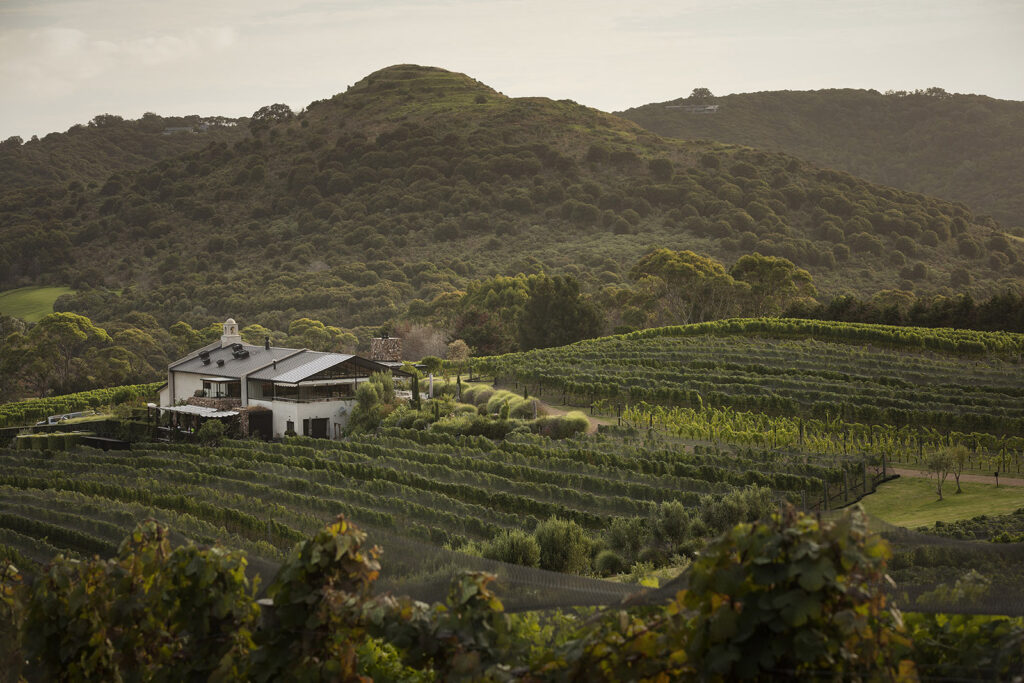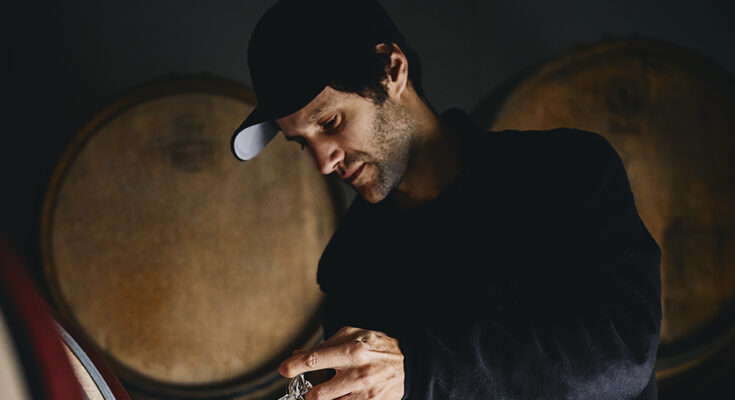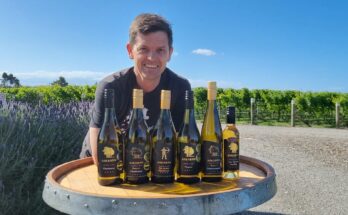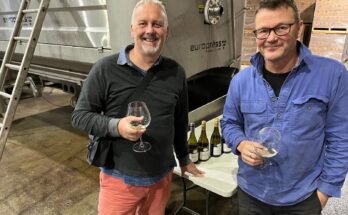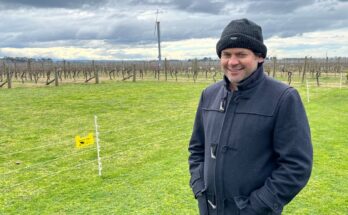I am out on Waiheke Island for a couple of days, trying some of the very best wines that are made in New Zealand, never mind in the Auckland region. It’s a breathtaking spot – with photo opportunities at every turn and fork in the road. You’re not short of lovely places to spend an afternoon, lunch, or quiet moment or two, either. Just in the Onetangi Valley there are three neighbouring properties – StonyRidge, Te Motu – and this afternoon’s destination – Tantalus Estate. Gabor and I are here to look at the winemaking with Alex Perez, and have a tour of the property with Sales and Marketing Manager Gwilim Evans. I ask Alex how he ended up on Waiheke?
Alex Perez: I was going to go to Nelson and make some wine there. The reason I came to New Zealand was to learn to make a decent Sauvignon Blanc, and I thought about Nelson because it was a bit different to Marlborough, and had some Pinot Noir, Pinot Gris and Chardonnay. And also the beer side of things because my background is in food science. It’s a nice location with good weather. Then, with Alibi Brewery at Tantalus – we started to design that in 2013, and we’ve started to see a lot of recognition in gold medals and trophies from the Brewers Guild awards.
Things tended to grow and change so quickly in those projects, being involved in the brewing as well. It’s just blam, blam, blam.. But we’ve been really lucky as well in the feedback that we’ve got – Masters of Wine giving us gold medals and scores of 95, 96.. Also, having Stonyridge and Te Motu as your benchmarks in the Onetangi Valley, you keep humble and keep working! We have a great team from the Director down to the Cellarhands being involved in all aspects. I am a big believer in teamwork and collaboration so would love to mention the hard work of Chris and Manu with our viticulture; Bernard with our beers; Mariano and Ryan with our cellar and of course, Linda and extraordinaire Gwilim with our sales impetus. I try to include everyone in the winemaking side of things as well.
Gwilim Evans: From the Cellar Door, the kitchens as well – then, for us, it is about the big picture, and feeling like we are part of a team. When people working in the Cellar Door are presenting our wines to a customer, then they have a lot more intimacy with the product. One thing that it is important to stress, is the importance that is given to the restaurant upstairs. It is the owners and directors dream, and before the whole vineyard came to life, it was their background. Everything that gets made here, has some connection to the restaurant.
WineFolio: I noticed you’ve got these unusual square tanks here – and eggs?
AP: I saw these in Napa – it makes sense from the storing side of things, but also they save space. You’ll see it in Chablis as well.
We are really into yeasts and the autolysis in a lot of the wines that we do, so that extra surface definitely makes an impact. We do have the concrete eggs as well, which I had a bit of experience with in South America. We went to visit Tony in Hawke’s Bay and he was starting the project, and I really loved his Chardonnays. So we have one for Syrah, one for Chardonnay and one for Merlot. And then we put a couple of barrels as well into the blend for what we call our ‘Reserve Egg Chardonnay’ just to give it another layer of complexity, and then work with the yeasts. Some of the inspiration for the Chardonnay comes from Kumeu River as well – I respect Michael a lot, and all the work he has done with the wild yeasts. Since we do have the microbiology lab in Alibi, then we are able to play in isolation and things like that.
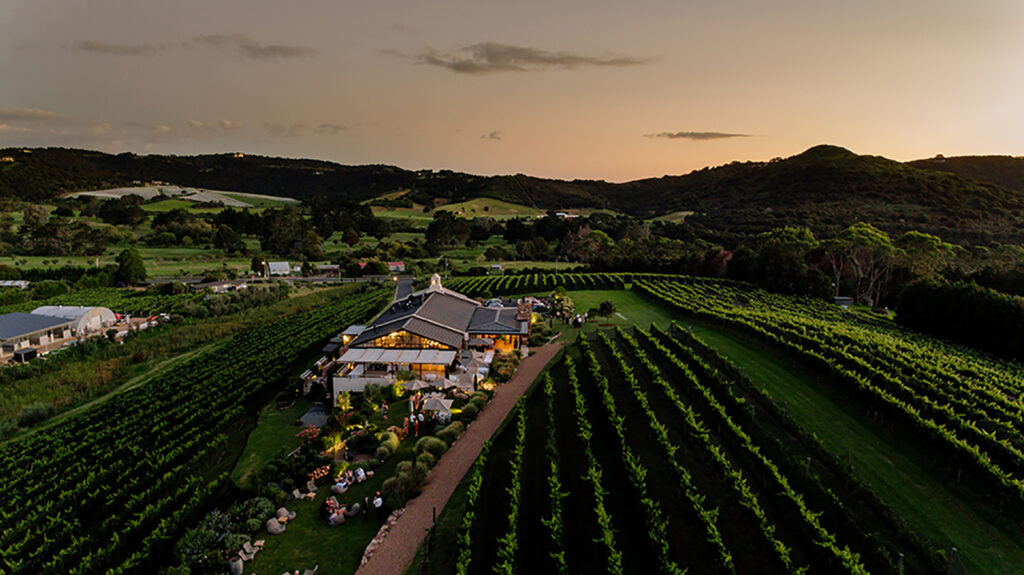
With the design of the winery as well, we were lucky that the directors gave us a lot of freedom to do what we really wanted to do. As a sustainable winery, it is designed for gravity feed, and we want to use less power, but also trying to be as gentle as possible. A mix between traditional winemaking – but also with our press, we can have so much control on the pressure. We also have a de-stemmer but we don’t crush the grapes – we just split them open and leave a lot of surface. We sort in the vineyard and then I sort in the winery as well. We do cold maceration, and then slowly bring the temperature up. Sequential innoculations with different yeasts – usually about 30% goes wild, 30% with yeast that we bring from the terroir, and then 30% with a commercial strain that we know, which brings some consistency as well. The fact that we have the lab gives us some room to play.
Extended maceration and some techniques from Bordeaux, which suit the left bank styles that we do, with Cabernet Sauvignon, with Franc, Merlot, Malbec. I spent time in France working and I think that our terroir is suited is more suited to the right bank with the clay content. I really like the St. Emilion style for Evoque, and then, for the Ecluse, which is our Cabernet, more like St. Julien – Paulliac style. We also do a Chardonnay which is a sort of Puligny Montrachet style, but we are also inspired by the local wines like Kumeu River and Tony Bish. We have so much to learn as well!
Waiheke is a great place to live, and I don’t really sleep much during harvest anyway! The technique that we do here is four punchdowns a day – so, midnight, 6am, midday, 6pm. It’s nuts.
We are also trying out air pulses as well as one of our cap management techniques. I’ve seen it in Napa, and some wineries in Argentina and Chile are doing it as well – with it fitted into the tanks. The same grapes are divided into fermenters and with one we do the traditional plunge, and then in the second one with have an oil-free compressor and put pulses of air – it creates a big plume. I reckon it creates a bit more roundedness – you are feeding the yeast with so much more air, and the kinetic of the fermentation goes really fast at first. I reckon the extra oxygen helps with it, and extraction can be a bit softer as well, with the tannins a bit less grippy. But at the end we blend it, so it is just a component. Another tool in the toolbox.
We also play around with barrel fermentation, but we do try to keep consistency as well. These fermenters are a bit of a hybrid between an open-top fermenter and a closed macerator as well – that we can gas, to keep the air out of it. And then basket-pressed straight to barrels.
We walk out of the winery into the barrel hall, sectioned out with heavy curtain-like dividers… to taste from the barrels some of the individual components such as Malbec, Cabernet Franc and so on – then into the final blended wines.
AP: The plan was to use our space very effectively. In the barrel hall, we can be performing malolactic fermentation on our reds, but keeping the middle portion cool for an extended ageing wine, like we are doing now with our ‘Grand Ecluse’ that will spend two years in barrel. We usually do one year with our reds.
And then at one end I can be fermenting whites, or keeping the elevage with the whites, by keeping the temperature and humidity separate. It was a very simple solution that we found – the first time I saw it was in the fish industry, with these dividers.
WF: I’ve seen something similar at Pyramid Valley but it is a horizontally tracked system, not vertical curtains like this in here.
AP: Sometimes simplicity is effective you know? Does it work? The owner was happy because it is practical and way cheaper than some other options. Sometimes when you are doing wine science, some of the ideas are mad.
Right now we are in preparation for racking – that is why we are dropping the temperature a bit. We don’t use any finings, we just rack and return to the same barrel.
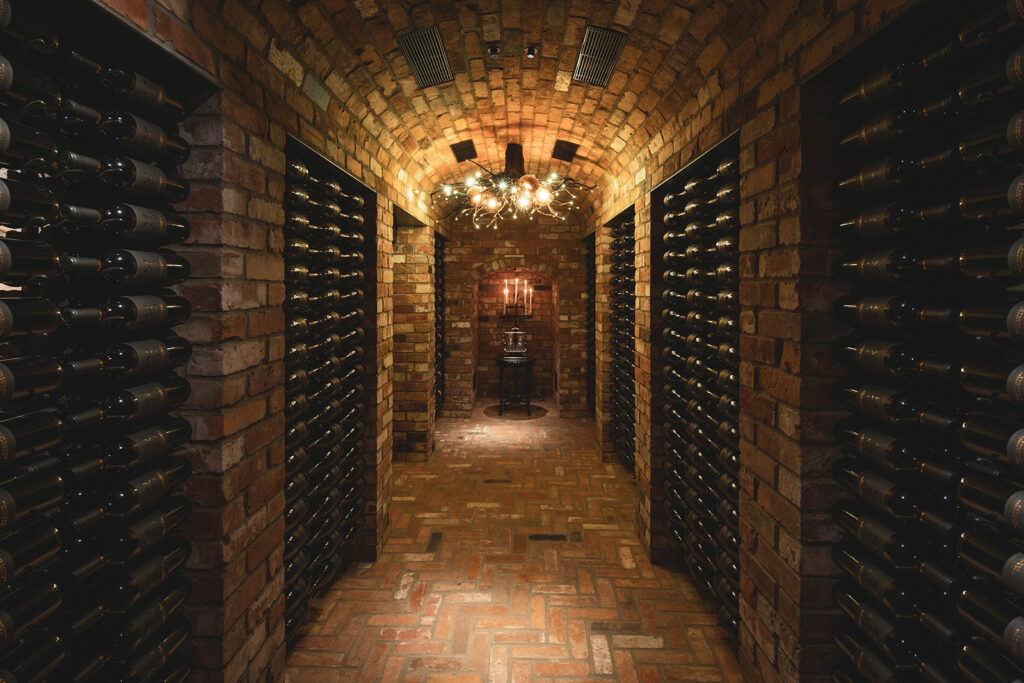
One of the things we had as soon as we got here was ‘how do you manage brettanomyces’ – especially if you use it properly, I don’t think brett is an enemy. As long as you are smart in how you use it – use it just a touch… for us the beauty of the blends is to bring different dimensions to the wine. Something that is going to keep changing in the bottle and in your glass.
AP: Our first vintage here was 2014, and it was designed to age. And of course a lot of Kiwis would say “great, I’ll open it tonight!” There’s a different mentality.
WF: Some people just like their wines fresher. You might give a New Zealander a 20-year old version of their favourite Bordeaux wine, and they might not like it – they prefer it at 3 years old? Often a European palate likes those tertiary characters.
GE: It might just be the style of wine – some are made to be approachable and fresher. Then a left bank Bordeaux may never reveal its subtlety until several years of age? We’re lucky here at Tantalus that we are allowed to sit on our wines. Our current release at the moment in the restaurant is 2016. We don’t want to serve a wine that isn’t ready.
AP: Yes – it allows me to create a wine whilst knowing that.
GE: I have a lot of respect for Te Mata and their Coleraine wine, but when I see the 2019 listed in a restaurant in Auckland, it almost breaks my heart. It is such a big wine and even if you like your wine fresh, you have got to admit that the benefit of a few more years would be very beneficial. But I understand sales and cashflow…
AP: What is in your glass now is Merlot. It has a touch of brett but I think it is on point.
WF: It has personality though – which I like. And texture, and acidity as well.
AP: It is fresh, really represents where it is coming from. An amazing component for the blend. And I will show you next some Cabernet franc from American Oak. For our Reserve range we use French oak, but we also have this second tier of wines we call the Estate. And that is Merlot/Franc inspired by St Emilion. We just released the ’18 of our Estate last week. ’16, ’17 and ’18 were all pretty challenging years – with ‘18 being the worst. For me, it just gives an amazing challenge. I’m the type of winemaker that believes in intervention – not the one that says ‘just let the terroir speak’. For me I tend to tweak and use the science and technology that we have. We don’t compromise on quality, and we managed to make reserve wine. A good winemaker is one who can make something in a difficult year.
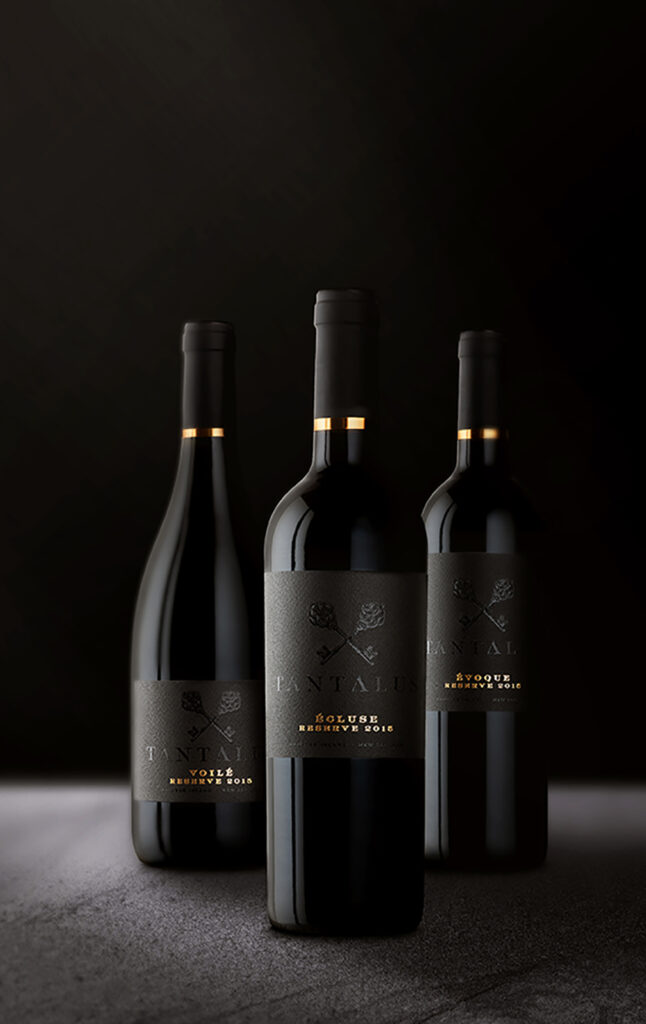
In the pandemic situation it is hard to get pickers. We are lucky that last year was such a perfect vintage that you have far less stress. – picking alternate rows to keep the distance apart. In 2020 we lost 50% of our workforce as they were panicking to head back home – to Germany, Italy…
GE: We used to have a walk between the vineyards – with us, Te Motu and Stonyridge, but it is closed now. People could walk from here and have an Entrée, then Stonyridge for a Main course, and Te Motu to finish.
AP: And as the new kids on the block, you want to make sure that your neighbours are happy with us. I was so happy when Stephen said that he liked our Evoque and the Syrah – that means a lot. Saratoga had got such a bad reputation, and the owner was quite a difficult character, but to me it offered the opportunity to try some experiments – co-fermentations, orange wine and so on. I mean, the reputation couldn’t get worse! We used to have Sauvignon Blanc here – so I would do massive skin contact and lots of interesting things. It was popular with some of the customers – they would say that “I tried something like that in Oregon”. And the wine was not expensive – around $25 a bottle.
WF: I quite like things like that! Always happy to try something from the edges, as well as the more traditional stuff.
AP: Talking of which – this is Cabernet Sauvignon from our Back Block 1 – ‘the babies’ as we call them, although they are seven years old now. The clone is the FPS29 – Coppolla.
WF: That is so focussed – seamless. The tannins are not astringent at all.
AP: We are gentle with it – not just in the ferments but also in the press. Splitting instead of crushing. And even if you like freshness in your wines, it has to be in balance. With our Syrah we do use stems, and add some viognier as well in the co-fermentation – this year around 1.5%.
WF: I like that – it helps to set the colour and adds something magical in the florals too.
AP: We try to create, and save a lot of esters in the winery – playing with different yeasts and try to bring some characters. The beauty of the 2020 was the blend. That’s the beauty of the vintage variation as well – it is when you can just finish and polish and shine. That ‘20, and the ’14 I reckon were the best, for Tantalus at least.
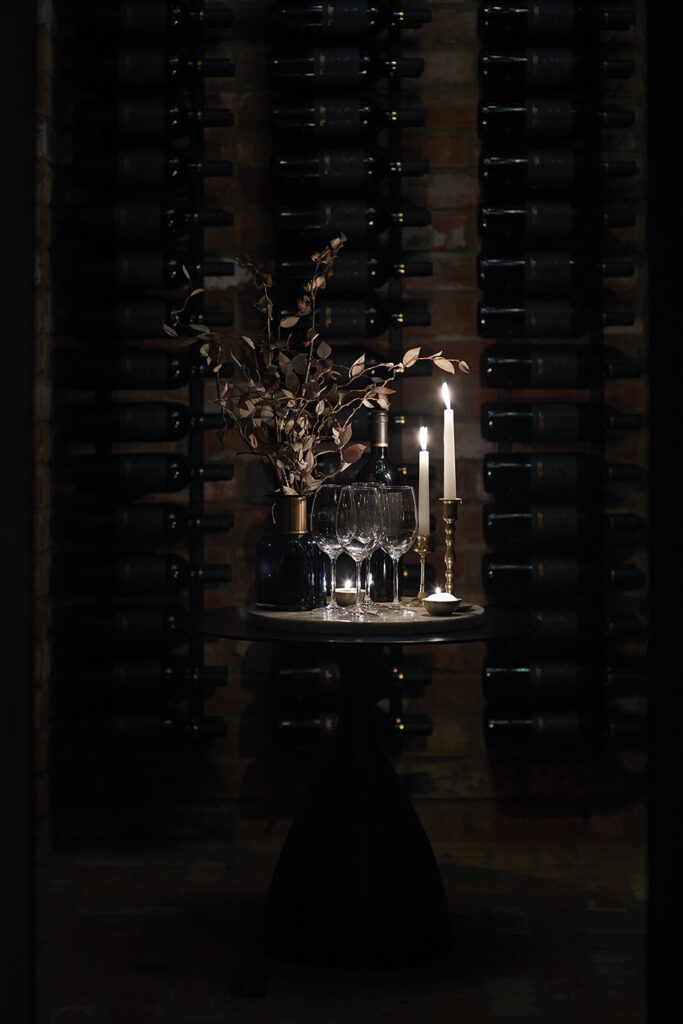
It’s quite interesting to be a winemaker on Waiheke now, because you have the generation of the legendary winemakers, and then the new kids from Uni with a completely different background. It’s just amazing being in the middle, you know?
We have the concrete eggs, and you can see the difference that makes. The purity of fruit is perfect. The vibrancy, and a lot less oxygen pick up as well. And the fact that it has a massive amount of yeast means the texture is nuts. The freshness – the nerve, and the verticality of the acidity; and also the autolysis texture. We do batonnage in our reds, but the egg is so powerful. The movement helps as an anti-oxidant as well, so we use less sulphur as a result.
I am quite science-focussed so we do bottle everything individually as well as doing the blends. We do retention samples for everything. It takes a lot of time but I reckon the results, and in the learning, of course, are worth it. After ten years, I think I’m getting the hang of it.
Now, in your glass is the Ecluse – Cabernet Sauvignon, Cabernet Franc, Malbec, Merlot and a touch of Petit Verdot. In fact we made our regular Ecluse, which is our left bank interpretation of Bordeaux. And then this one which will be named something like ‘Grand Ecluse’ – so this one actually has two and a half years in barrel.
WF: Ok – just so you know – that’s really quite good. The length is extraordinary, and it has that pop in the middle and that flavour floods out over the edges. A real savouriness mid-palate. With a wine like this, I actually don’t want to speak. I just want it to wash over me, silently.
AP: And this one is actually the same wine, just in Taransaud oak. It’s a bit of work, but we rack and return to the same barrel. We have a Francesca pump – I was at a symposium and we saw this crazy yellow pump that we had to have.
GE: Try to imagine this wine in another five years as well.
AP: It’s going to be fantastic. At this stage I’m inclined to maybe include a portion of the 2021 vintage. Maybe a portion of the Franc with the American oak, a portion of the Merlot. We’ll see. Over a week of blending we’ll ask people within the company, then asking people outside.
WF: And do you take it to places outside the winery? I find that depending on where you are, a wine personality can change. And everything tastes better in a barrel hall like this!
We leave the beautiful barrels behind and move through a quick tour of the vineyard, to the equally gorgeous Tasting Room. Joined by Linda Jones, Cellar Door Manager, we settle around a sturdy outdoor table which quickly fills up with glasses and bottles.
GE: You’re in the Onetangi Valley here, and sometimes the temperature on the ground in the middle of summer can reach almost 50 degrees Celsius, so having this extra cooling effect in the soil really helps a bit. We make our olive oil from our own olive trees, and when the owners purchased the Estate in 2013, they planted around 5000 native trees. All of that flora and fauna brings a balance to the Estate – and makes the destination look better! We use a lot of the herbs, hops and flowers for the kitchen, the beer and cocktails.
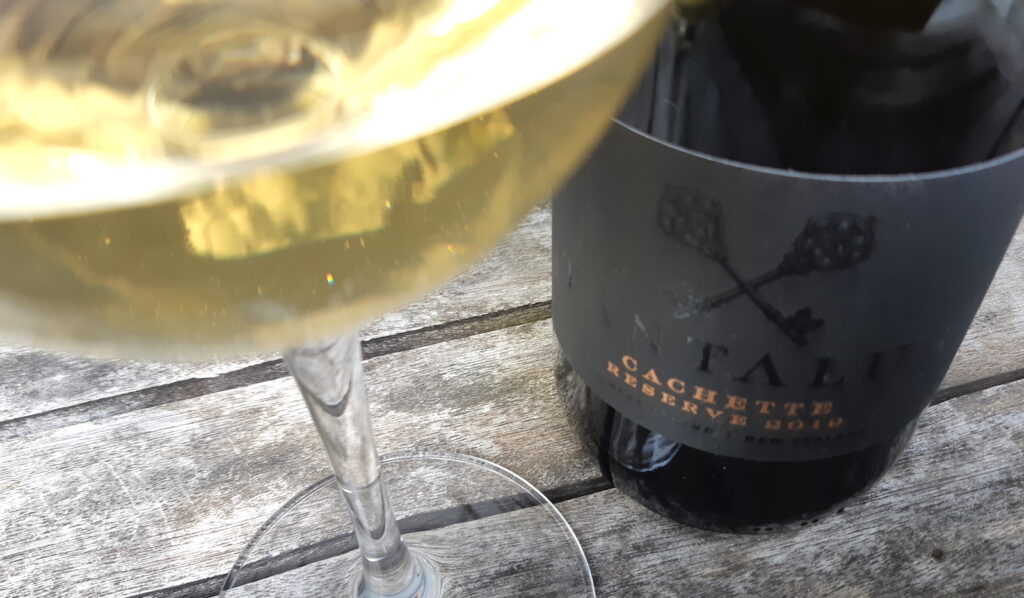
Alex is our apiarist, and looks after the bees. We get the honey, but actually, the impact that they have had on the vineyard with the cross-pollination on the vines, and also killing the botrytis before it happens! They are little vineyard workers that we don’t have to pay. One year we had the honey turn pink – we think from the Malbec.
So – Chardonnay. Different vintages, different terroir, different winemaking processes – same winemaker, but.. we started doing Chardonnay in 2015, and it very quickly became a cult wine for the island, because nobody was really focussing on Chardonnay at the time. To the extent that people were joining our wine club, purely to get the Cachette, because we had it on allocation only.
And we have another range which we call our ‘Regional Wines’ for things that we can’t do here – like Sauvignon Blanc and Pinot Noir, but Chardonnay was an exception, and although it was very limited supply – we bring the juice over to Waiheke and make it in our egg. It is the only regional wine that made it to the Reserve range.
WF: That’s all about the texture, that egg wine. It does have lovely ripe stonefruit, but it’s uniqueness is that texture – stunning. Which do you prefer, Alex?
AP: Well, the egg has a portion of Cachette, and Cachette has a portion of egg in them. Different vintages though. ’18 was quite challenging, even for Hawke’s Bay. When we got the juice and put it in the egg, it was a bit tricky.
I guess my heart is more with the Cachette because it is here, and just a little block. I tried the Kumeu River Matés two weeks ago – and it is in the same style. A bit more burgundian and restrained, but wow – just so amazing.
In 2022 I may try and pick a portion of it a bit earlier to try and retain that lovely texture and herbaceousness without going too green. The acidity here drops so quickly, and we usually only do 50% malolactic. We usually pick at the end of March. We use Francois Freres for the oak in the Chardonnay and in 2019 the fruit could handle it so we did 40% new oak, medium plus toast. The cork is expensive but 100% TCA-free.
GE: The very first vintage of Tantalus was 2014, so we are only just at the beginning. We are aware of how hard it is to climb the ladder – and how easy it is to fall off it. We are a young team, and a humble team; but with a lot of ambition. We have different backgrounds, but we bring our different experiences to the table. Like the ‘Grand Ecluse’ or whatever it is going to be called – it is something new for us, and 2020 was such a special vintage, with a limited crew to harvest. So we decided ‘let’s give this vintage a tweak, and give it something extra’. This is where the idea came from. Sometimes in the office we have a few too many ideas!
